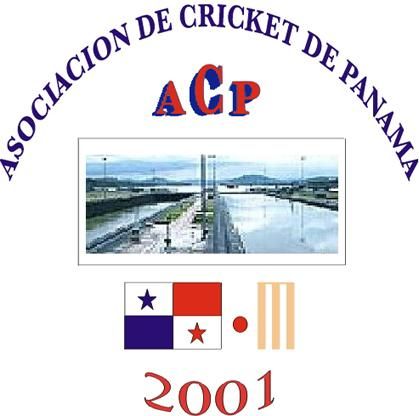
The Panamanian cricket team is the team that represents the country of Panama in international cricket matches. They became an affiliate member of the International Cricket Council in 2002. Their international debut is believed to be against a side from Trinidad and Tobago in 1964.
History
Cricket has been played in some organised fashion in Panama for nearly a century. It was introduced to the country by West Indians and South Asians who settled during the canal construction days. The game is most popular today among the descendants of these workers.
Their first international in recent years was a friendly series played against Venezuela in 2000 which they won 1-0. Panama were invited to play in the 4th South American Championships later that year. The team performed well in its first international tournament, finishing fourth of seven teams.
The competition set the ball rolling for international cricket in Panama and the following year saw the team on tour in both Argentina and Colombia. That summer, Panama also had the chance to qualify for the 2nd Americas Cup against affiliate nations in the Americas Region. Two places were available but these went to the Cayman Islands and the Bahamas, with Panama finishing the tournament in last place.
In 2002, Panama were granted affiliate status by the ICC along with a number of other countries in the Americas Region. Two years later, they hosted their first international tournament: the Americas Affiliate Championships. They finished as runners up to the Bahamas, just missing out on qualification for the ICC Americas Championship.
The affiliates tournament was expanded to a multi-division competition in 2006, and Panama were placed in Division Two. They finished third in that tournament, played in Argentina, behind the hosts and the Bahamas. They retained their place in Division Two for 2008. In that installment of the competition, played in Suriname, Panama finished in third place and will remain in the division for the next cycle, likely to be played in 2010.
Panama entered and hosted the Central American Championships for the first time in 2009. They came in as favourites, being the strongest Central American international side and won the competition as expected. The tournament was their first international Twenty20 competition.
Panama will take part in Division Two of the region ICC Americas Tournament which should be taking place in 2010.
Links to more information on cricket in Panama:
Panama Cricket at Cricketarchive.com
Venezuela vs Panama @ Cricinfo.com
Panama gets back into international cricket
Panama's cricketers end their seclusion.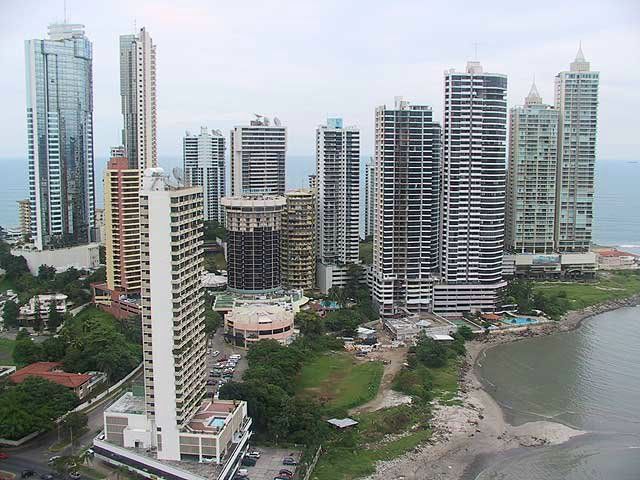
*Acknowledgements to Wikipedia.org and owners of pictures and videos used.
Wednesday, June 10, 2009
In the International Spotlight...Panama Cricket
Monday, June 8, 2009
Player Profile (#52)...Andrew Symonds (Australia)
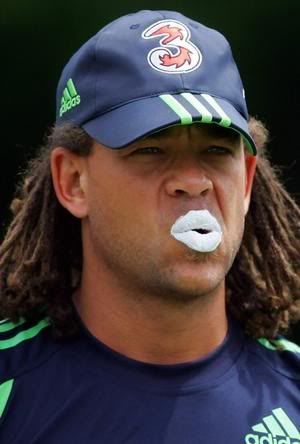
Andrew Symonds (born 9 June 1975, Birmingham, England) is an all-rounder in the Australian cricket team. A two-time World Cup winner, Symonds is a right-handed middle order batsman and alternates between medium pace and off-spin bowling.
Since mid-2008, he spent most of the time out of the team, due to disciplinary reasons, including alcohol. In June 2009 he was sent home from the 2009 World Twenty20, his third suspension, expulsion or exclusion from selection in the space of a year. Many cricket analysts have speculated that the Australian administrators will no longer tolerate him, and that Symonds may announce his retirement.
Andrew Symonds O.D.I career
Symonds is an aggressive right-handed batsman who can also bowl off spin or medium pace, making him a good all-rounder. He is an exceptional fielder, with a report prepared by Cricinfo in late 2005 showing that since the 1999 Cricket World Cup, he had effected the fifth equal most run-outs in ODI cricket of any fieldsman, with the fourth highest success rate. He is very agile for his size and weight (medium-heavy build; 187 cm tall), has excellent reflexes, is able to take catches well and has a powerful and accurate throwing arm. His nickname is Roy, shortened from the name Leroy, after a coach from early in his career believed he resembled local Brisbane NBL hero Leroy Loggins. Andrew Symonds once won the Cricket Writers' Club's prestigious Young Cricketer of the Year award following a successful debut season with Gloucestershire. He was selected for the England A tour of Pakistan that winter, but pulled out in order to win a place in the Australian side (a decision that turned him into an overseas player for Championship purposes). Symonds's place on that England A tour, which was captained by Nasser Hussain, was taken by Middlesex's Jason Pooley.
He made his One Day International (ODI) debut for Australia in 1998. He opted to represent Australia over England (his country of birth).
As an ODI player, he is known for scoring runs at an excellent strike rate of over 90, with a highest score of 156. He cemented his place in the team in Australia's opening match of the 2003 Cricket World Cup, where he scored 145* to guide Australia from 4/86 to 8/310. Symonds is sometimes branded as a one-day International 'specialist' as his ODI record with both ball and bat are far better than that of his Test match averages.
At the 2006 Allan Border Medal count, Symonds would have won the One Day player of the year award as he polled the most votes, but was ineligible due to a late night of drinking which led to him turning up still inebriated to a match against Bangladesh, after which he was suspended. Symonds won Player of the Series in the 2005/06 Australian VB Series.
Although selected in Australia's 15-member World Cup squad he was unavailable for selection for the first few matches because he ruptured his biceps while batting against England on 2 February 2007 in the Commonwealth Bank Tri Series. Surgery was performed and Symonds underwent extensive physical rehabilitation. As a result he missed the remainder of that tournament as well as the Chappell-Hadlee Trophy in New Zealand while Australia suffered their longest losing streak in over a decade. Symonds remarkably made a relatively quick recovery after returning for Australia's win in their last preliminary World Cup match against South Africa. He bowled the final ball of the 2007 Cricket World Cup that was hosted in the West Indies.The final was contested between Australia and Sri Lanka and was shortened to 38/36 overs per side due to rain throughout the day. Even the final few overs of the Sri Lanka innings were played in almost darkness.
During the second final of the 2007-08 Commonwealth Bank Series against India on 4 March 2008, Symonds shoulder charged a male streaker who had entered the playing arena. Symonds, who had once considered a career in rugby league with the Brisbane Broncos, may have faced assault charges had the man taken legal action.
When in Darwin during the One Day Series against Bangladesh in August/September 2008, he left the team to do some fishing, while the Australian cricket team was at a compulsory team meeting and was ordered to be sent home by the coach and acting captain Michael Clarke.
Andrew Symonds Test career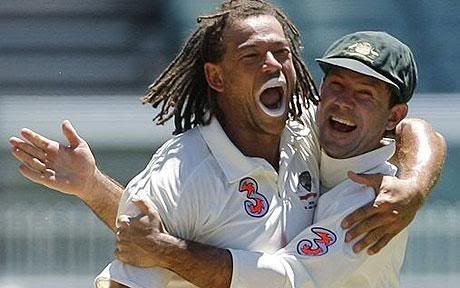
In March 2004, he made his long-awaited Test debut in Australia's tour of Sri Lanka after showing great form in O.D.I cricket in 2003. However, he encountered difficulty against Muttiah Muralitharan on the dusty, spinning Sri Lankan tracks, failing to pass 25 in any of his four innings, and was dropped after two Test matches. He was recalled in November 2005 following the injury to Shane Watson, as Australia's search for an all-rounder continued. After 5 Tests, with a batting average of 12.62 and a bowling average of 85.00, his position in the team was under a cloud until the 2005 Boxing Day Test. On the first day of the match, he was out caught behind for a golden duck. Then, with his batting average threatening to drop under 10 and bowling average pushing 100, Symonds took 3/50 in the South African first innings before blasting 72 off 54 balls in the second innings (including a new Australian record for the fastest Test fifty - 40 balls) and taking 2/6.
Whilst batting in the second Test in the Australian 2006 tour of South Africa, Symonds was struck in the face of his helmet by a bouncer off Makhaya Ntini. Symonds required four stitches on the inside of his upper lip. Struggling for reliable impact, Symonds was again dropped at the end of this series.
Following the retirement of Damien Martyn during the Ashes in 2006/07 Symonds was again recalled to the team. Scoring just 26 and 2 in his first Test back he found himself under pressure to justify his place in the team. In the Boxing Day Test Symonds faced his biggest challenge when arriving at the crease with Australia in deep trouble at 5/84. After a slow start to his innings he proceeded to score his first Test century, combining with his good friend Matthew Hayden to put on a 279 run partnership and bringing up the century with a six. Symonds was finally dismissed for 156.
During Sri Lanka's tour of Australia he had good form with the bat but had an ankle injury which ruled him out of the rest of the test series.
During the second test against India on 2 January 2008 Symonds completed his second test century, coming to the crease with Australia at 4-119. When Michael Clarke (1) and then Adam Gilchrist (7) were dismissed in quick succession Australia found themselves in poor shape at 6-134. Symonds and Brad Hogg put on a record 7th wicket partnership at the S.C.G (also a record for Australia vs. India) of 173 until Brad Hogg was dismissed for 79. Symonds was the beneficiary of some controversial decisions in the course of his innings. At stumps on the first day, Symonds was not out on 137, and Australia 376-7. By the end of the innings, Symonds finished on 162 not out, when the Australians were finally bowled out for 463.
Symonds misbehaving antics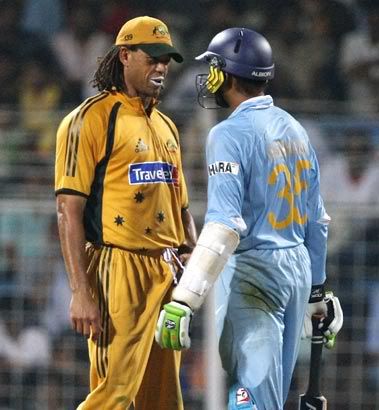
In 2007 crowds at the One Day Series in Vadodara, Nagpur and Mumbai were seen to offend Symonds with monkey chants. After the BCCI initially denied the incident at Vadodara took place, further incidents occurred at the other grounds in the series.
In January 2008, Indian spin bowler Harbhajan Singh received a three-match ban after a complaint that he had racially abused Symonds during the third day of the Second Test at the SCG. It was alleged that Harbhajan called Symonds a "monkey" after Symonds confronted him over touching fellow Australian player Brett Lee. The case was decided by the match referee, Mike Procter, in a hearing held after the match. The BCCI lodged an appeal against the decision. On January 29, 2008, after the hearing of the appeal, at Adelaide by ICC appeals commissioner John Hansen, the racism charge on Harbhajan Singh was not proved and the three Test ban was lifted. However, a lesser charge (Level 2.8 offense) of using abusive language was applied and Harbhajan was fined 50% of his match fee. Hansen later admitted that he "could have imposed a more serious penalty if he was made aware by the ICC of the bowler's previous transgressions" - including a suspended 1 Test Match ban. The ICC claimed the "database and human errors ... played a part in Harbhajan Singh escaping a more severe penalty during his appeal hearing in Adelaide"
"Hansen also criticised Symonds in his report accusing him of swearing at Harbhajan after a friendly gesture by Harbhajan towards Brett Lee. Also it was reported that senior players had written a letter to John Hansen requesting a downgrading of the charge. The letter was signed by Sachin Tendulkar and Ricky Ponting and counter-signed by Michael Clarke, Matthew Hayden and Andrew Symonds. The stump microphone audio from immediately after the alleged incident between Harbhajan Singh and Andrew Symonds was released by Channel Nine.
Symonds was set to play in the August 2008 opening game in Darwin, but instead headed back to Queensland after missing the team meeting on Friday to go fishing. Stand-in captain Michael Clarke said Symonds needs to re-evaluate his desire to represent Australia, saying "The main concern from us is Andrew's commitment, to playing for this team and in my opinion and I know the rest of the leadership team's opinion, you need to be committed 100 per cent".
He was also not selected for the Australian Tour to India, Oct 2008 - Nov 2008, as a part of his misdemeanor. However, after the 2-0 series loss Australia received in India, Symonds quickly become an integral part of Australia's future plans. He was selected to play the test series against New Zealand during November - December 2008. He did not play any significant role in the first test in which Australia won. However after the end of the test, on 22 November, he was involved in an incident in Brisbane and was reported to be involved in a brawl with another patron who had attempted to hug and have his photo taken with the cricketer. He was cleared by Cricket Australia to play in the following test in Adelaide on 26 November.
He then played in the First two Tests against South Africa, but performed poorly. He was omitted from the team for the Third Test due to injury; at the same time many critics called for his omission on performance grounds.
In January 2009, Symonds gave an interview with sports comedians Roy & HG, where he made remarks about the acquisition of New Zealand cricketer Brendon McCullum by the New South Wales Blues to play in KFC Twenty20 final against Victoria. Sounding intoxicated, Symonds called McCullum a "lump of shit", and said that having dinner at the home of teammate Matthew Hayden was enjoyable because he could glance at Hayden's wife. He was charged by Cricket Australia with violating the code of conduct and was fined, following a hearing over the 25-minute "audiotape" with Cricket Australia chief Michael Brown. As a result, he was also barred from selection for a period until he was deemed to have been successfully rehabilitated.
In the meantime, he continued to play for Queensland but was overlooked for Australia's ongoing international matches. He was recalled in April to play in the ODIs against Pakistan.
He was not selected in the 2009 Ashes squad. Shane Watson, Andrew McDonald and Marcus North were selected instead. In early June 2009, Symonds was sent home from the ICC World Twenty20 tournament in England, following a late night drinking episode after a team dinner. Cricket Australia chief executive James Sutherland called a press conference to announce Symonds' dismissal, which is likely to mark the end of Symonds' international cricket career. His Cricket Australia contract is also now under review.
Links to more information on Andrew Symonds:
*Acknowledgements to Wikipedia.org and owners of pictures and videos used.

Saturday, June 6, 2009
The biggest upset of the century

I was trawling through the internet for something to write about and I was shocked to see what I saw, I kept saying "Netherlands beat England" over and over again. England is the home of cricket, and where Twenty20 cricket first started off from. This game was played at Lords, which is known the world over as being the spiritual home of cricket. Anyone would expect England to easily trounce a minnow like the Netherlands but as some history suggests, not even the giants of cricket are immune to the biggest upsets (Bangladesh Beating the Aussies at Sophia Gardens in 2005, Ireland's heroics at the 2007 World Cup are two examples that stick out in my mind).
The Netherlands played well above their weight and known skill level to beat England by 4 wickets in the upset with TN de Grooth being the man of the match. This is a game that will go down in history and remind the big players in world cricket to not underestimate any opposition. I hope that they will produce more giant killing performances.
View the news bulletin and scorecard by clicking HERE. Also see them celebrate their deserved win by clicking HERE.
*Acknowledgements to Wikipedia.org and owners of pictures and videos used.
Tuesday, June 2, 2009
The ICC Twenty20 Cricket World Cup
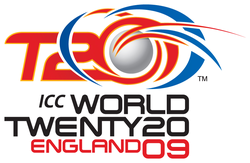
The ICC World Twenty20 is the international championship of Twenty20 cricket. The event is organised by the sport's governing body, the International Cricket Council (ICC). The tournament consists of 12 teams and is contested by all Test-playing nations plus qualifiers. The championship is expected to be held around every two years.
The inaugural event, the 2007 ICC World Twenty20, was staged in South Africa from 11-24 September 2007. The tournament was won by India, who become the first World T20 Champions after defeating Pakistan by 5 runs in the final at Johannesburg.
All Test-playing nations achieve automatic qualification to the tournament, with the remaining places filled by ICC associate member nations through a qualification tournament.
Qualification for the 2007 ICC World Twenty20 came from the results of the first cycle of the ICC World Cricket League - a 50-over format league for non-Test playing nations. The two finalists of the Division One tournament - Kenya and Scotland - qualified for the inaugural World Twenty20 tournament alongside the Test-playing nations. Qualification for subsequent tournaments, beginning with the 2009 event, is achieved through a special event using the twenty20 format.
Qualification
The 2009 ICC World Twenty20 Qualifier was played between 2 August and 5 August 2008 in Stormont, Belfast in Northern Ireland. The six competing teams were: Bermuda, Canada, Ireland, Kenya, The Netherlands and Scotland, with the top three earning a place at the 2009 ICC World Twenty20 in England. The competition was won by Ireland and the Netherlands, who shared the trophy after rain forced the final to be abandoned without a ball bowled. Both teams qualified for the 2009 ICC World Twenty20 finals in England. Due to the withdrawal of Zimbabwe from the competition, the two finalists are joined by third-placed Scotland.
Tournament
The tournament format for the 2007 edition consisted of four stages:
Participating teams in the 2009 edition of the Twenty20 World Cup are:
Australia
Bangladesh
England
India
Ireland
Netherlands
New Zealand
Pakistan
Scotland
Sri Lanka
South Africa
West Indies
Links to more info on the 2009 Twenty20 Cricket World Cup:
Twenty20 World Cup Coverage
Cricinfo's 2009 ICC World Twenty20 coverage
ICC World Twenty20 Website
*Acknowledgements to Wikipedia.org and owners of pictures and videos used.

In the International Spotlight...Myanmar Cricket
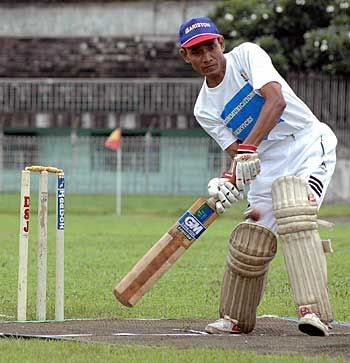
The Myanmar cricket team is the team that represents the country of Myanmar aka Burma in international cricket matches. Cricket in Myanmar dates back to when Burma was a province of British India. The British brought the game there, as they did to the rest of India, and the game progressed to the level where the Marylebone Cricket Club played two two-day first class matches there on a tour to India in 1926/1927. The first of these was played at the Gymkhana ground in Rangoon against a Rangoon Gymkhana team. That game was drawn with the MCC on top after forcing the home side to follow-on. The second game was against the Burma team themselves at the BAA Ground, also in Rangoon. The MCC won this game restricting Burma to low scores in both their innings, and only having to chase 7 runs to win in their second innings. This remains the country's only first class game.
Cricket remained very much a minority sport in Myanmar, and was nowhere to be seen between 1988 and 1995. In 2002 the game was seeing a resurgence, with a seven team league organised by former Bengal first class player Naresh Kumar, with some former first class players taking part in games attended by around 250 people. Cricket was also featured on TV news reports. The Myanmar Cricket Federation received a visit from the ICC in 2004 and became an affiliate member of the organisation in 2006. The game is currently played primarily by ex-pats, but the game has been introduced into schools.
Just two months after gaining ICC membership, Myanmar headed to Malaysia to take part in the ACC Trophy for the first time. They did not have the best of experiences, with a series of heavy defeats, details of which follow:
The nadir of their tournament came against Nepal, who eventually finished in fourth place in the tournament. Myanmar were bowled out for just 10 runs, with no batsman scoring more than a single and half the total being made up of extras. The Nepali reply started with three runs off the first ball, followed by three wide deliveries that went for five runs and another three runs from the second legitimate delivery. Nepal therefore reached their target in just two legitimate deliveries. Some called it the greatest mismatch in the history of international cricket.
Myanmar should be protected from such vast mismatches in the near future as the ACC Trophy is being split into two divisions, with Myanmar in the lower of the two, the Challengers division.
Links to more information on Myanmar Cricket:
Myanmar's Only 1st Class Cricket game
*Acknowledgements to Wikipedia.org and owners of pictures and videos used.















